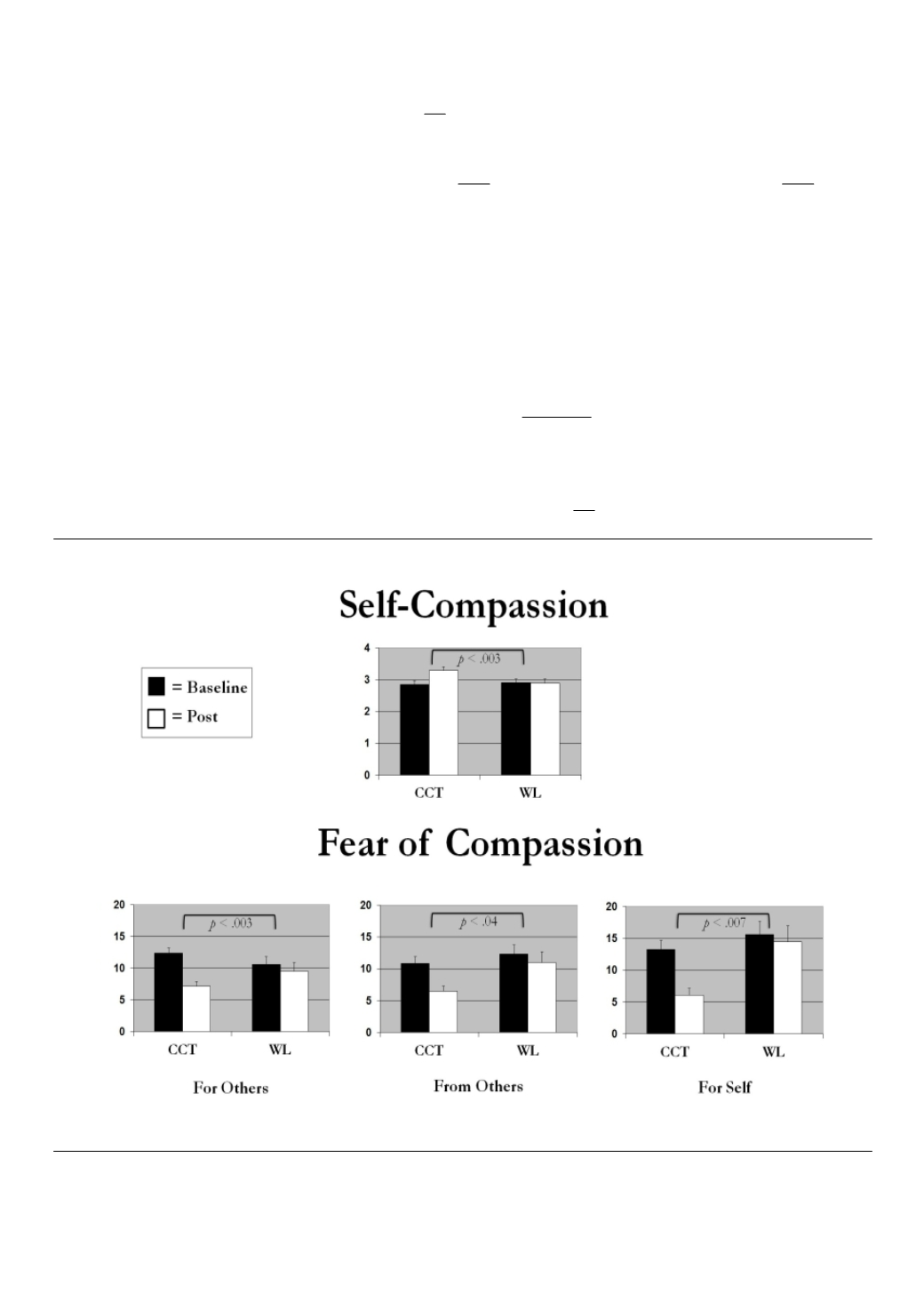
In the first randomized controlled trial of CCT
a community sample of 100 adults were randomly
assigned to eight weeks of CCT or a eight-week waiting list (WL) where participants waited eight
weeks before receiving treatment. Participants were assessed on several measures of compassion
including the Fears of Compassion Scales (FCS)
and Self-Compassion Scale (SCS)
. The
FCS is comprised of 38 items and assesses three orientations of compassion: fear of compassion
for others
– compassion felt for others; fear of compassion
from others
– being the recipient of
compassion; and fear of compassion
for self
– being compassionate towards oneself. SCS is a 26-
item measure of how one extends compassion to one’s self in instances of perceived inadequacy,
failure or general suffering. The SCS highlights three main components:
self-kindness
, or being
warm towards oneself;
common humanity
, or recognizing that suffering and failure are part of the
shared human experience; and
mindfulness
, or taking a balanced approach to one’s feelings and
emotions. After eight weeks, when compared to WL, CCT resulted in significant improvements in
all three domains of compassion – FCS
for others
(
p
< .003), FCS
from others
(
p
< . 04), and self-
compassion (FCS
for self
:
p
< . 007; SCS
p
< .003) (see
. Further, the amount of time
spent in meditation practice was also tracked during the eight-week course. Interestingly, more
meditation practice during CCT was associated with increased compassion for others. In sum, this
study demonstrates that specific subtypes of compassion can be enhanced through CCT and
formal meditation practice can enhance compassion for others.
Figure 1. Enhancing Compassion Through CCT.
Structure of the Compassion Cultivation Program
What follows is a summarized description of the step-by-step protocol developed specifically for
442
Research


